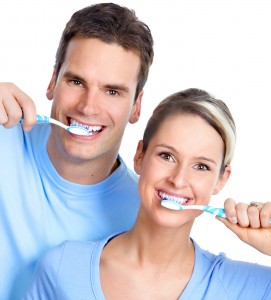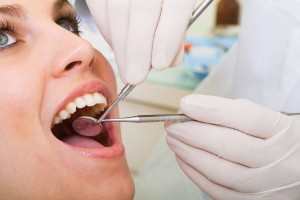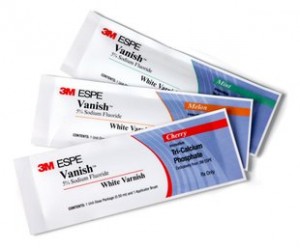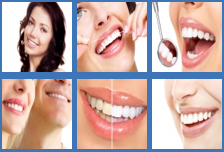Preventative Dental Treatments Loganville, GA

What Is Preventative Dental Care?
Preventative dental care consists of treatment methods to help you take care of your teeth and gums on a daily basis. Preventative care is vital for your oral health and should be practiced daily. By simply brushing and flossing daily, eating a healthy diet, and visiting your professional dentist on a regular basis can make all the difference in your overall oral health. At Eastside Dentistry, we understand that life can sometimes interfere with our daily cleanings. In the event that proper oral care is not maintained daily, we offer a variety of treatment methods to help you along the way!

Routine Professional Dental Cleanings
Though brushing and flossing on a daily basis is vital for proper oral care, your dentist will be able to get in those hard to reach areas and utilize specials tools for deeper cleanings. It is recommended that your dental cleanings should be done every 6- 12 months to avoid the dangers of additional dental treatments such as root canals, dental bridges, dental crowns, or dental fillings. Dr. E will consult with you about your daily care regimen so that you are fully educated on the Do’s and Dont’s of your dental care.
Questions to ask your dentist about preventative care:
- Which dental care products do you recommend for my teeth? (toothbrush/ floss)
- Based off my prior treatments and current oral health, how many dental cleanings should I have per year?
- Am I at risk for any dental damage or disease? If so, what can I do to improve my dental care?
Contact us today for additional information on your next cleaning, or feel free to schedule your appointment online!
Ultrasonic Cleaning
One of the many benefits to having your teeth professionally cleaned is a vital step known as the Ultrasonic Cleaning! The Ultrasonic Cleaning system is used to help rid your teeth of hardened plaque and decay. The tip of the instrument vibrates against the tooth to help dislodge any hard residue that is adhering to your enamel. Then, water is flushed periodically to flush away debris that is removed from the surface of your teeth and clears the area for easier access during cleaning. And the final, and most important steps to your Ultrasonic Cleaning, is the bacteria removal. As the instrument continues to clean, the motion of the top in combination with the flow of water or dental solution produces bubbles that implode and cause cells walls containing bacteria to break up, leaving you with fresh breath, and an “ultra” clean mouth!
Dental Sealants
Dental sealants are thin plastic coatings that are applied to the grooves on the chewing surfaces of the back teeth to protect them from tooth decay. Most tooth decay in children and teens occurs on these surfaces. Sealants protect the chewing surfaces from tooth decay by keeping germs and food particles out of these grooves.
Sealants are one part of a child’s total preventive dental care. They are applied after the dental cleaning is done. A sealant can last for as long as 5 to 10 years. Sealants should be checked at your regular dental appointment and can be reapplied if they are no longer in place.
Fluoride Treatment
Fluoride helps prevent tooth decay by making the tooth more resistant to acid attacks from plaque bacteria and sugars in the mouth. It also reverses early decay. In children under 6 years of age, fluoride becomes incorporated into the development of permanent teeth, making it difficult for acids to demineralize the teeth
Fluoride is a mineral that occurs naturally in many foods and water. Every day, minerals are added to and lost from a tooth’s enamel layer through two processes, demineralization and remineralization. Minerals are lost (demineralization) from a tooth’s enamel layer when acids — formed from plaque bacteria and sugars in the mouth — attack the enamel. Minerals such as fluoride, calcium, and phosphate are redeposited (remineralization) to the enamel layer from the foods and waters consumed. Too much demineralization without enough remineralization to repair the enamel layer leads to tooth decay. Fluoride also helps speed remineralization as well as disrupts acid production in already erupted teeth of both children and adults.
There are many reasons why patients request fluoride treatments during their dental cleanings. The first and foremost benefit is that flouride makes your teeth more resistant to acid attacks from bacteria, plaque, and sugars within your mouth, which helps to prevent tooth decay. In addition to protecting your teeth, it also helps to reverse early decay spreading.
There are a few different ways that your fluoride treatment can be applied- gel, foam, or varnishes. Gels can be applied either directly on the tooth or placed in a mouth guard. Foam is directly applied to your mouth guard, while varnishes are directly applied to each tooth. Before treatment, Dr. E will go over the procedure thoroughly with you so that you fully understand the process and after care involved, if any.

Product Used: Vanish
Vanish™ 5% Sodium Fluoride White Varnish with Tri-Calcium Phosphate delivers fluoride, phosphate, and calcium-all key ingredients for building strong teeth. Fluoride and calcium react to form calcium fluoride, which aids in sensitivity reduction. Vanish varnish is easy to apply in the dental office . It is simply swept on the tooth surface in one thin coat, after which it covers and adheres to the teeth. We chose Vanish as our Flouride Treatment product because it becomes virtually invisible after being applied. .This new patented salvia-activated formula allows the product to migrate to tooth surfaces for enhanced coverage. We also chose this product because it is used to help treat hypersensitive teeth, exposed dentin, and root-surface sensitivity.
Oral Cancer Screening
During your initial dental visit an exam will be done to screen for oral cancer. During an oral exam, your dentist looks over the inside of your mouth to check for red or white patches or mouth sores. Using gloved hands, your dentist also feels the tissues in your mouth to check for lumps or other abnormalities. . The goal with oral cancer screening is to identify cancer early, when there is a greater chance for a cure.
While some think this is a rare cancer, mouth cancer will be newly diagnosed in about 100 new individuals each day in the US alone, and a person dies from oral cancer every hour of every day. If you add the sub category of laryngeal throat cancers, the rates of occurrence (about 12,000 additional new cases per year) and death are significantly higher. When found at early stages of development, oral cancers have an 80 to 90 % survival rate.
Factors that can increase the risk of oral cancer include:
- Tobacco use of any kind, including cigarettes, cigars, pipes, chewing tobacco and snuff, among others
- Heavy alcohol use
- Previous oral cancer diagnosis
Ask your dentist whether oral cancer screening is appropriate for you. Also ask about ways you can reduce your risk of oral cancer, such as quitting smoking and not drinking alcohol.
Identafi® and Multi-Spectral, Oral Cancer Screening Overview:
The deep penetrating power of the Identafi® multiple wavelengths will enhance the early detection of mucosal abnormalities that may be cancerous. The new Identafi® uses the Identafi® Multi-Spectral Fluorescence and Reflectance technology to enhance visualization of mucosal abnormalities such as oral cancer or premalignant dysplasia that may not be apparent to the naked eye. But unlike other fluorescence technologies and dye systems, the Identafi® is Multi-Spectral with three distinct color wavelengths, making it easier to distinguish lesion morphology and vasculature aiding the dental professional in determining next steps.
How It Works:
The Identafi® uses white, violet and amber wavelengths of light to excite oral tissue in distinct and unique ways. As a result, biochemical changes can be monitored with fluorescence, while morphological changes can be monitored with reflectance. The combined system of fluorescence and reflectance uses the body’s natural tissue properties as an adjunctive tool for oral mucosal examination. Conventional examination of tissue is performed using a highly concentrated White light.
Wearing reusable Identafi® filtered eye wear to enhance visual effects and allow transmission of reflected light, the health professional then switches to Violet for a second observation. The clinician’s photosensitive glasses block the violet excitation light and allow the observance of the tissues natural fluorescence. Violet light enhances normal tissue’s natural fluorescence; however, suspicious tissue appears dark because of its loss of fluorescence.
When suspect abnormalities are present the selector is switched to Amber light, which enhances normal tissue’s reflectance properties so the clinician may directly observe the difference between normal and abnormal tissue’s vasculature. This independent view of vascular architecture may assist in the assessment of cofounders when screening for oral cancer.
Studies indicate abnormal tissue has a diffuse vasculature, where normal tissue vasculature is clearly defined. The combination of all three Multi-Spectral wavelengths provides the clinician with more visual information, improved results over direct visual exam alone and increased confidence for recommending biopsies. Because Oral Cancer is becoming more and more common in today’s economy, our staff at Eastside Dentistry actively dedicates time to conducting Oral Cancer Screenings on patients simply by request or if there are prevalent signs early on. It is important to keep in mind that Oral Cancer Screenings are purely tests administrated early on to detect possible signs of cancer- before they show. If your test comes back abnormal, then additional tests will be administrated from that point forward.
To request your Oral Cancer Screening today, contact Dr. E or schedule your next appointment online today!

Digital Radiographs
Radiographs (also known as Dental X- Rays) are vital to many dental treatment methods because they have the ability to detect damage to the gums and teeth that may not be visible to your dentist during a routine visual examination. At Eastside Dentistry, we use Digital Radiography for x-rays due to the many benefits such as:
- Less Radiation Exposure
- Higher Quality Care
- Image Enhancement
- Enhanced Image Overall Quality
- No Chemical Developers Used
Typically Dr. E will request dental x-rays to be taken if you are a new patient or if you are a follow-up patient to make sure everything is addressed from the beginning. After that, dental x-rays are taken depending on the assessment of your individual needs due to your current oral health. Dr. E is always thorough during every patients’ visual examination. If you have questions regarding your dental x-rays or current dental care, contact our dental team or simply book your appointment online today!



